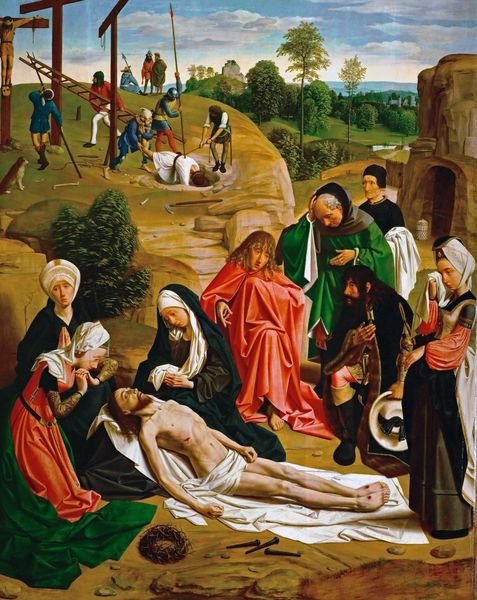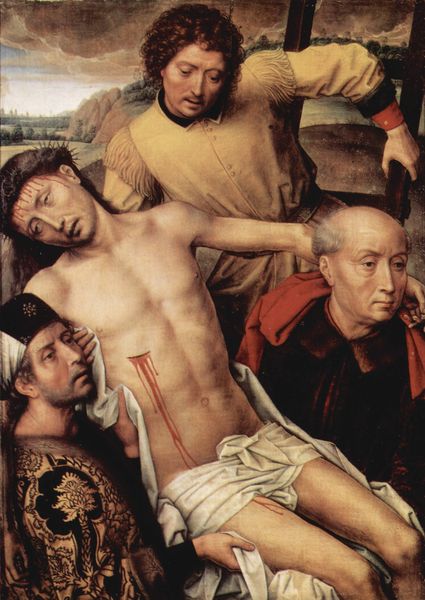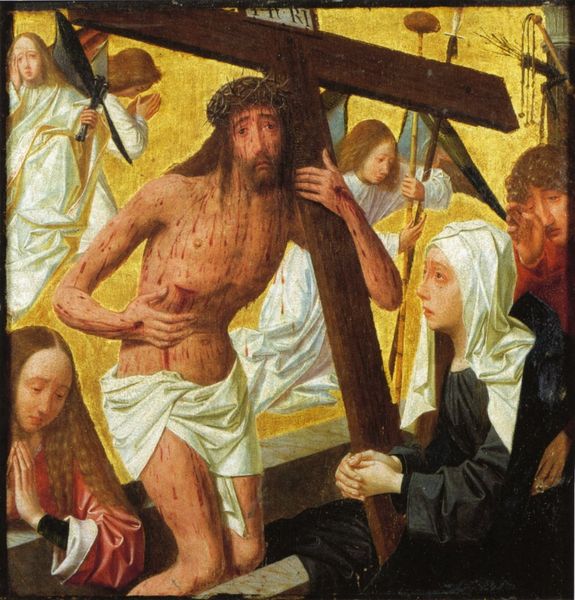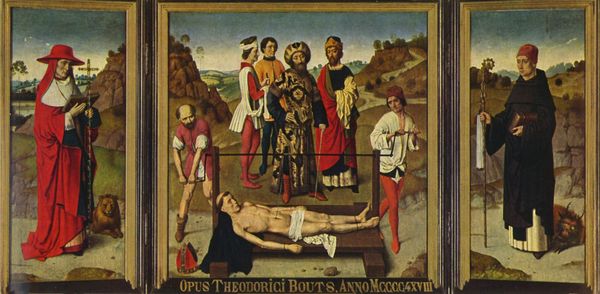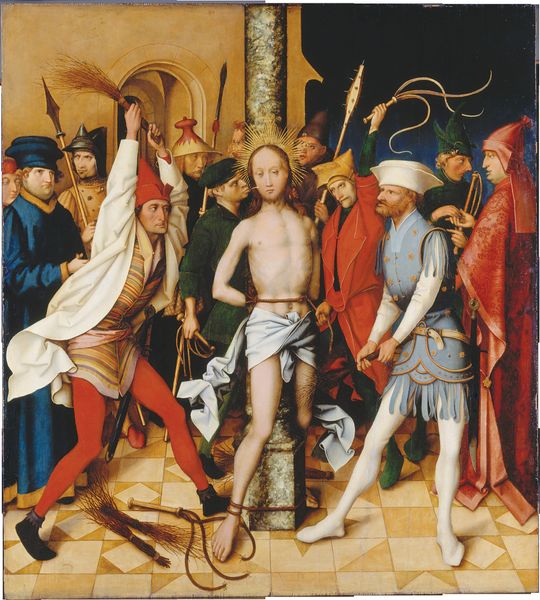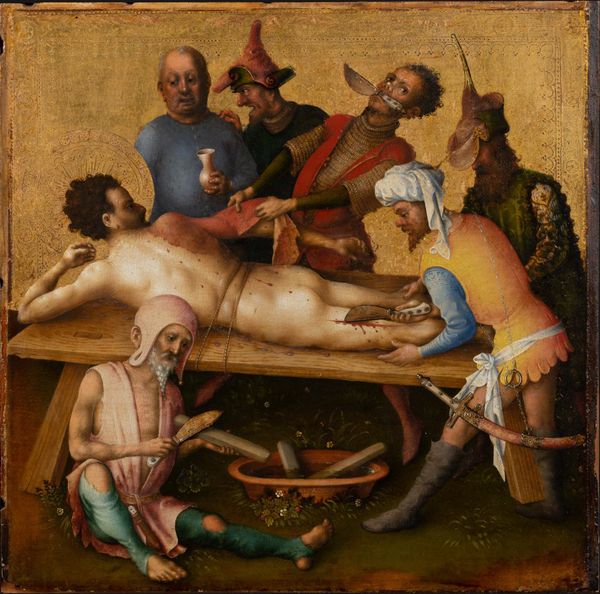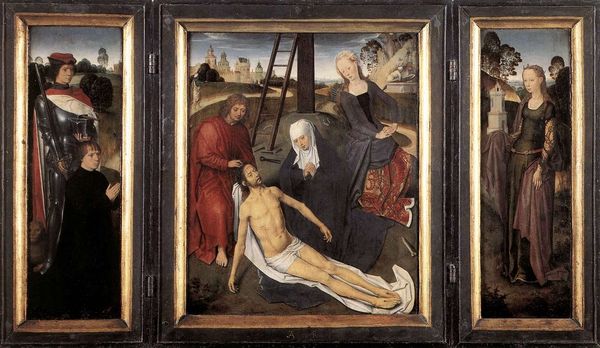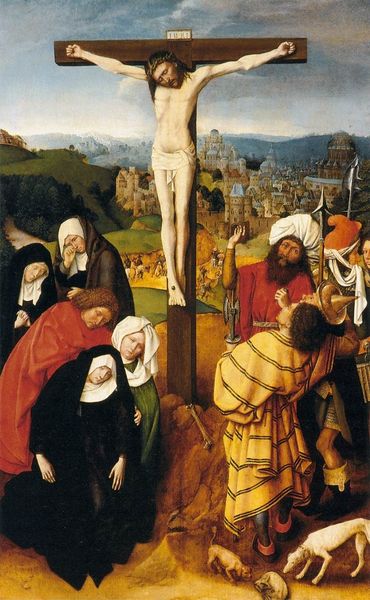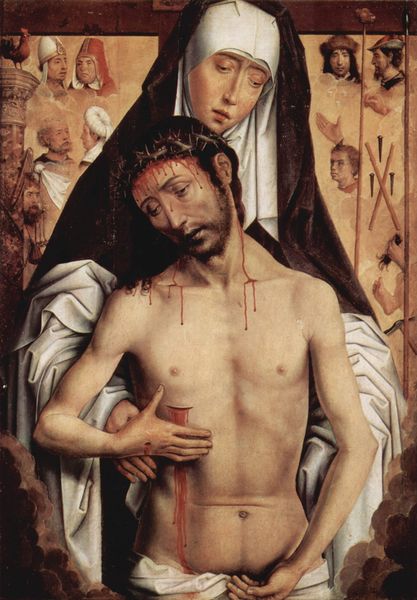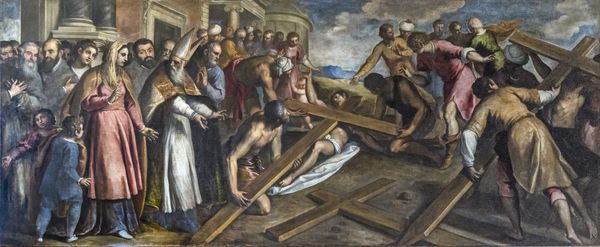
painting, oil-paint
#
medieval
#
narrative-art
#
painting
#
oil-paint
#
figuration
#
christianity
#
men
#
history-painting
#
northern-renaissance
#
realism
#
christ
Dimensions: 202 x 172.8 cm
Copyright: Public domain
Editor: Here we have Gerard David's *The Flaying of the Corrupt Judge Sisamnes*, created around 1498, rendered in oil paint. It’s...certainly striking, especially the gruesome central scene. It almost feels like a public spectacle. How should we interpret this kind of…justice? Curator: It *was* a public spectacle, or rather, meant to be a pointed commentary on power. Consider the painting’s intended location: Bruges Town Hall. David wasn't just depicting a historical event, but also shaping civic discourse around justice itself. The visual horror underscores the consequences of corruption, wouldn’t you say? Editor: Absolutely, but it's interesting how this gruesome scene is presented with such meticulous detail, almost detached. Is that a common feature of Northern Renaissance art serving a civic function? Curator: Indeed. Think about the context: The Northern Renaissance saw the rise of increasingly complex legal systems and urban centers. Art became a powerful tool for disseminating moral lessons and reinforcing social order. David presents us with both the crime and the consequence within an idealized civic space. Who benefits from depicting justice this way? Editor: Presumably, the ruling class – reminding everyone, including themselves, of the importance of remaining virtuous in their duties. Though, that's pretty on-the-nose...does it offer any subtlety? Curator: Well, perhaps the very explicitness of the flaying also implicitly questions the barbarity of the process itself. David highlights not only the 'what' of the punishment but the 'how,' prompting potentially uncomfortable questions about its execution. Is justice always just, even in its application? Editor: I never thought about it that way before; it's more nuanced than just a straightforward message about law and order. Thanks for this analysis! Curator: My pleasure. It reminds us how even seemingly straightforward historical paintings are deeply entangled with the political and social concerns of their time.
Comments
No comments
Be the first to comment and join the conversation on the ultimate creative platform.
